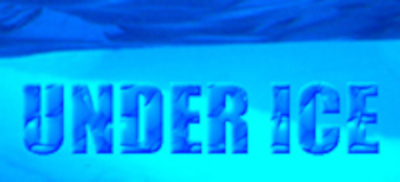asNeeded
Type of resources
Available actions
Topics
Keywords
Contact for the resource
Provided by
Formats
Update frequencies
status
-

CTD data collected in Bjørnafjorden and Langenuen, Norway, during a cruise with KV Tor.
-

XTCD and XBT data collected during the 2024 HiAOOS deployment cruise with KV Svalbard, in the Nansen and Amundsen Basins. Part of the data was taken to extend the section along 30E carried out by the Norwegian Polar Institute from R/V Kronprins Haakon.
-

Ambient sound was measured in Storfjorden, Svalbard at frequencies from 30 to 24000 Hz at a depth of around 20 meters. The measurements were carried out in open sea at depths of about 100 metres or more. The measurements were carried out using a drifting small boat, where the engine was turned off. Thereafter, a second small boat was used for transmitting pings at 11 kHz towards the first small boat at different depths and ranges. The experiment was carried out in June 2020 by Master students under supervision, as part of a research school in the Barents Sea with K/V Svalbard, organized under the UAK project lead by the Nansen Environmental and Remote Sensing Centre.
-

Nansen Nordic Seas Database contains data from 1870-2010. This product contains oceanographic data extracted from NNSD, gridded to a 1 degree grid with monthly-mean values at [0m,5000m) depth. Variables: temperature, alkalinity, chlorophyll, nitrate, nitrite, oxygen, ph, phosphate, salinity and silicate.
-

XBT profiles of temperature, pressure and sound speed in the Fram Strait from KV Svalbard in September 2010. There are a total of 41 profiles and 71422 observations. Two different XBT probes were used: T5 and T7, see http://www.sippican.com/contentmgr/showdetails.php/id/312 for more info on the probes.
-

Three GPS trackers were deployed on sea ice in the Fram Strait between 7th and 8th July 2016, collecting GPS data until 10th September 2016 with an interval between 5 and 30 min.
-

This dataset is based on acoustic recordings from five moorings deployed during the UNDER-ICE experiment in the Fram Strait. The UI1 mooring carried 8 hydrophones: HM501 (467m), HM502 (476m), HM504 (494m), HM505 (503m), HM506 (512m), HM507 (521m), HM509 (530m), HM310 (539m). A total of 8188 recordings were obtained from each hydrophone every 3 hours from Sep 2014 - Jan 2016. The UI2 mooring carried 10 hydrophones: HM511 (336m), HM512 (327m), HM513 (318m), HM514 (309m), HM515 (300m), HM516 (291m), HM517 (282m), HM518 (273m), HM519 (264m), HM320 (255m). A total of 4358 recordings were obtained from each hydrophone every 3 hours from Sep 2014 - Jan 2016. The UI3 mooring carried 10 hydrophones: HM521 (317m), HM522 (308m), HM523 (299m), HM524 (290m), HM525 (281m), HM526 (272m), HM527 (263m), HM528 (254m), HM529 (245m), HM330 (236m). A total of 8188 recordings were obtained from each hydrophone every 3 hours from Sep 2014 - Jan 2016. The UI4 mooring carried 10 hydrophones: HM531 (313m), HM532 (304m), HM533 (295m), HM534 (286m), HM535 (277m), HM536 (268m), HM537 (259m), HM538 (250m), HM539 (241m), HM340 (232). A total of 8189 recordings were obtained from each hydrophone every 3 hours from Sep 2014 - Jan 2016. The UI5 mooring carried 9 hydrophones: HM542 (565m), HM543 (556m), HM544 (547m), HM545 (538m), HM546 (529m), HM547 (520m), HM548 (511m), HM549 (502m), HM550 (493m). A total of 4359 recordings were obtained from each hydrophone every 3 hours from Sep 2014 - Mar 2016. Each acoustic recording covered 130 s with sampling rate 1000Hz. 10-, 50- and 90- percentiles of sound pressure and power were calculated for each reception using 50 % overlapping Hanning window with a window length of 1024 samples. The units for sound pressure is Pa. The unit for power (ocean sound level) is dB re uPa2 Hz-1. Noise by cable strumming is included. The processing is described in Geyer et al. 2021 https://doi.org/10.1121/2.0001507.
-

Data collected with LISST-VSF in Storfjorden, Svalbard, during the UAK 2020 Research School with KV Svalbard.
-

Using variables from TOPAZ4, CS2SMOS, ERA5, sea ice age. References can be found in Edel et al. (2024). https://doi.org/10.5194/egusphere-2024-1896
-

Ambient sound was measured in Storfjorden, Svalbard at frequencies from 30 to 24000 Hz at a depth of around 20 meters. The measurements were carried out in open sea at depths of about 100 metres or more. The measurements were carried out using a drifting small boat, where the engine was turned off. Thereafter, a second small boat was used for transmitting pings at 11 kHz towards the first small boat at different depths and ranges. The experiment was carried out in June 2020 by Master students under supervision, as part of a research school in the Barents Sea with K/V Svalbard, organized under the UAK project lead by the Nansen Environmental and Remote Sensing Centre.
 NERSC GeoNetwork catalogue
NERSC GeoNetwork catalogue